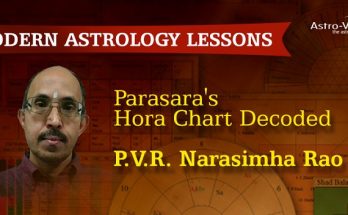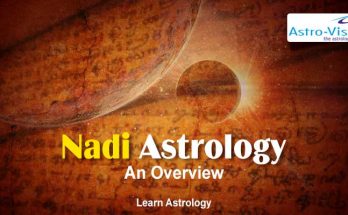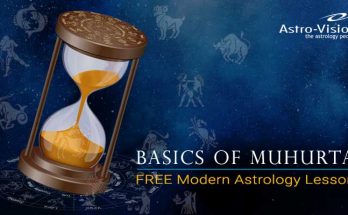The Srimad Bhagavad Gita, the Vedas and the Upanishads, apart from their spiritual content, also have an astrological angle to them. As the sixth Vedanga, astrology gives a new dimension to these sacred works and helps in understanding their complete meaning. The other Vedangas Siksha, Nirukta, Chandas, Kalpa and Vyakarana are usually taught as a means to interpret the Vedas and the other Sastras but astrology has never been seen in this light. As the eye of the Vedas it gives insights into their essence and hidden meaning. The Srimad Bhagavad Gita carries astrological clues and principles in each of its Slokas.
An effort has been made in this paper to explain the Gita Slokas from the astrological perspective based on lectures on the subject by Mr. A.B. Shukla, National President, Indian Council of Astrological Sciences.
Arjuna asks many questions of Lord Krishna in the Gita with the Lord answering them. But on one occasion Lord Krishna Himself asks a question of Arjuna and without waiting for his answer goes on to say more. The reason for this is hidden in the Lord’s question itself.
कुतस्वा करमलमिदं विषमे समुपास्थितम् |
अनार्यजुष्टमस्वर्ग्यमकीर्तिकरमर्जुन ||
How has the dejection come upon you at this difficult hour? It is shunned by noble souls. It is disgraceful and it does not bring heaven or fame to you.
The Lord identifies in Arjuna, a special personality among the Pandavas (who were fighting for Dharma). As the backbone of the Pandava forces, Arjuna has an important role in the upcoming war. He is, on the one hand, one of the best warriors but also mentally disturbed on the battlefield. He is the only one who refuses to fight for Dharma for reasons which are not convincing. The Lord uses this opportunity to guide Arjuna with the ultimate knowledge in the form of the Gita.
Each word in this Sloka can be said to represent one of the planets. An important planet that is missing here holds the answer to the question.
Kuthastva can be understood as from whence such a thought has come or the curiosity or intention to delineate a problem which is shown by Mercury.
Kashmalam which means dejection or depression in the manas (mind) which is now expressing unwarranted attachment represented by the Moon.
Vishame samupasthitam meaning a difficult time or an inappropriate time shown by Saturn who controls time.
Anaryajushtam or na arya jushtam which is an act which is not becoming of an Arya or a noble man. Arya means an expert, competent and capable person and Anarya would therefore mean one devoid of these qualities. Competence is a moulding of hard work signified by Mars.
Aswargyam means that which does not lead to heaven or comforts and luxuries. Comforts and luxuries are governed by Venus.
Akirtikaram is the opposite of fame or disgrace or something that is not praiseworthy. Since fame is governed by the Sun, this term is covered by the Sun.
A careful examination of these terms shows that the important planet Jupiter is missing. Jupiter who symbolizes the Guru is a synonym for Gnana or wisdom. Had that wisdom been present in Arjuna where would there have been the need for the Gita?
Though Arjuna looks upon Lord Krishna as his true philosopher, guide and Guru he has not surrendered completely at the Lord’s feet and still harbors many doubts in his mind. It takes all of seventeen chapters (2nd to 18th) to clear these doubts which include showing him the Vishwaroopa or Universal Form of the Lord (Chapter XI). The Lord does not leave any question unanswered which ultimately leads to Arjuna accepting Him his Guru in the complete sense of the term when he says,
नष्टो मोहः स्मृर्तिलब्धात्वत्प्रसादान्मयाच्चुत |
स्थितोഽस्मि गतसन्देहः करिष्ये वचनं तव ||
By your grace my delusion has fled and I have gained wisdom. My confusion is gone and I shall do your bidding.
When all the doubts of Arjuna get resolved and he completely surrenders himself to the Lord, the purpose of the Gita is fulfilled at which point Lord Krishna stops his sermon.
Astrologically Sloka II-2 which has Jupiter missing in it would mean that the absence of any connection between Jupiter or the 9th lord (equivalent of Jupiter) with the Ascendant or the Ascendant lord would lead to confusion or lack of wisdom The importance of Jupiter is shown in this Sloka.
All the planets appear as malefic since they are associated with negative emotions but they can become benefic if associated with the favorable counterpart of these emotions. For example, arva (noble men) can depict the benefic aspect of Mare while anarya can show the malefic aspect of Mars. In fact, at this stage all the six planets are not in a good state and there is no contribution from Jupiter too. But as the Gita progresses, Arjuna’s doubts and delusion start to melt down and in the aid by the grace of his Guru, he attains complete wisdom and gets enlightened.
This principle embedded in the Gita can be applied to horoscopes.
- If Jupiter and Mercury have friendly relationship and they are placed in a Kendra, Trikona or connected with the Ascendant or the lord of the Ascendant, the native will have good analytical ability. Example: Chart 1 of Vinayak Damodar Sawarkar. If the relationship between the two is not good, then the opposite result holds good.
A similar combination can also be seen in Queen Victoria’s horoscope (Chart 2).
- If Jupiter and Saturn enjoy a friendly relationship and they are placed in a Kendra, Trikona or connected with the Ascendant or the Ascendant lord, the native could be beyond the scope of time or in other words, be a man of vision. Example: Guru Nanak (Chart 3).
- If Jupiter and Mars’ enjoy a friendly relationship and are placed in a Kendra, Trikona or connected with the Ascendant or the Ascendant lord, the native will be endowed with valor, dexterity and competence. Example: Aurangzeb (Chart 4).
- If Jupiter and Venus have a friendly relationship and are placed in a Kendra, Trikona or connected with the Ascendant or the Ascendant lord, the native enjoys all pleasures and luxuries. Example: Akbar (Chart 5).
If Jupiter and the Moon are in a friendly relationship and are placed in a Kendra, Trikona or connected with the Ascendant or the Ascendant lord, one has full control over his mind and is not swayed by worldly pain or pressures and understands how to surrender to God. Example: Ramakrishna Paramahamsa (Chart 6).
Courtesy: MODERN ASTROLOGY (Authors : Navneet Kaushik and Ashish Sharma)









2 Comments on “Astrology in the Srimad Bhagavad Gita”